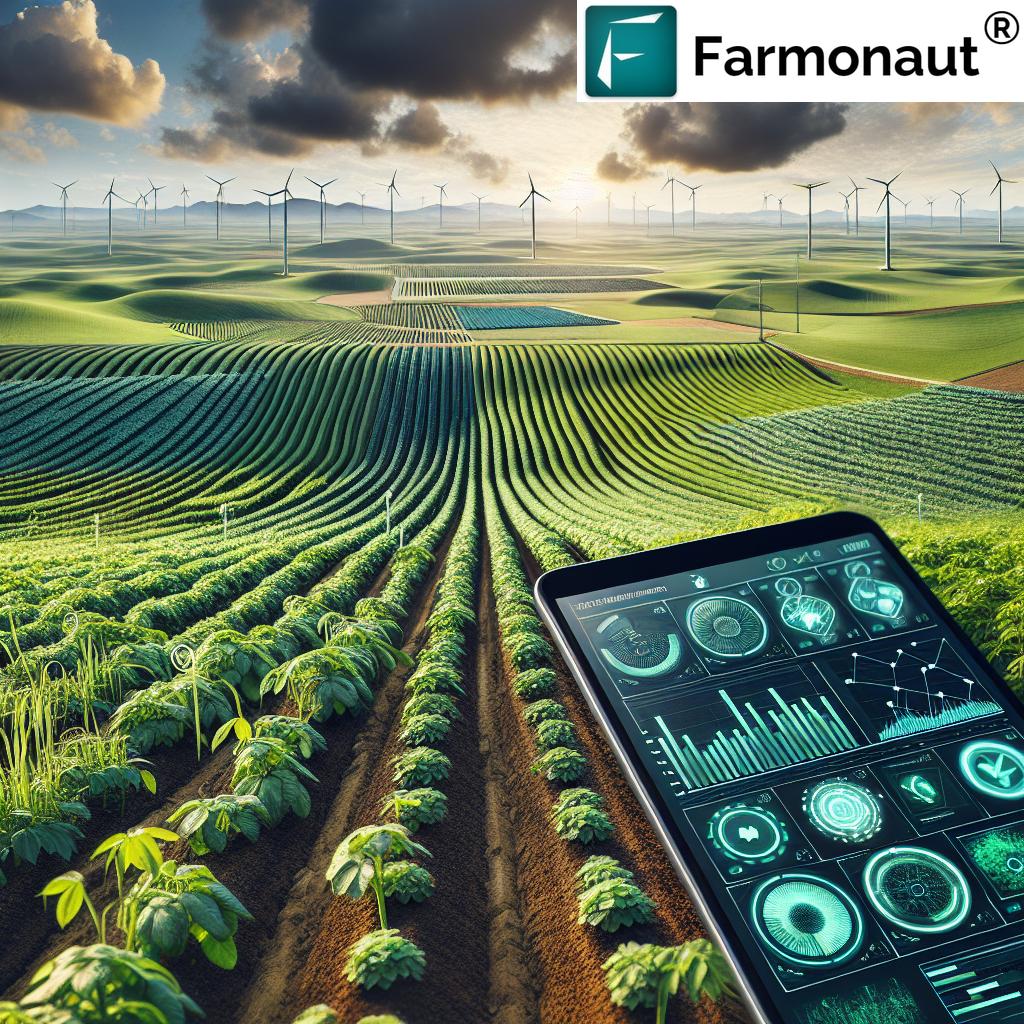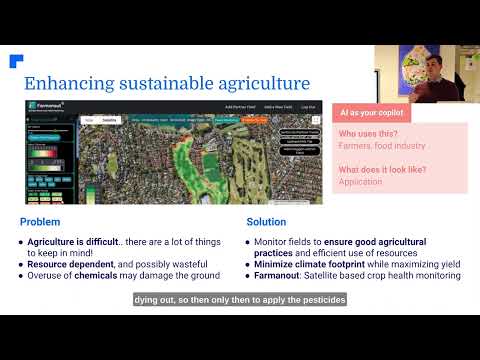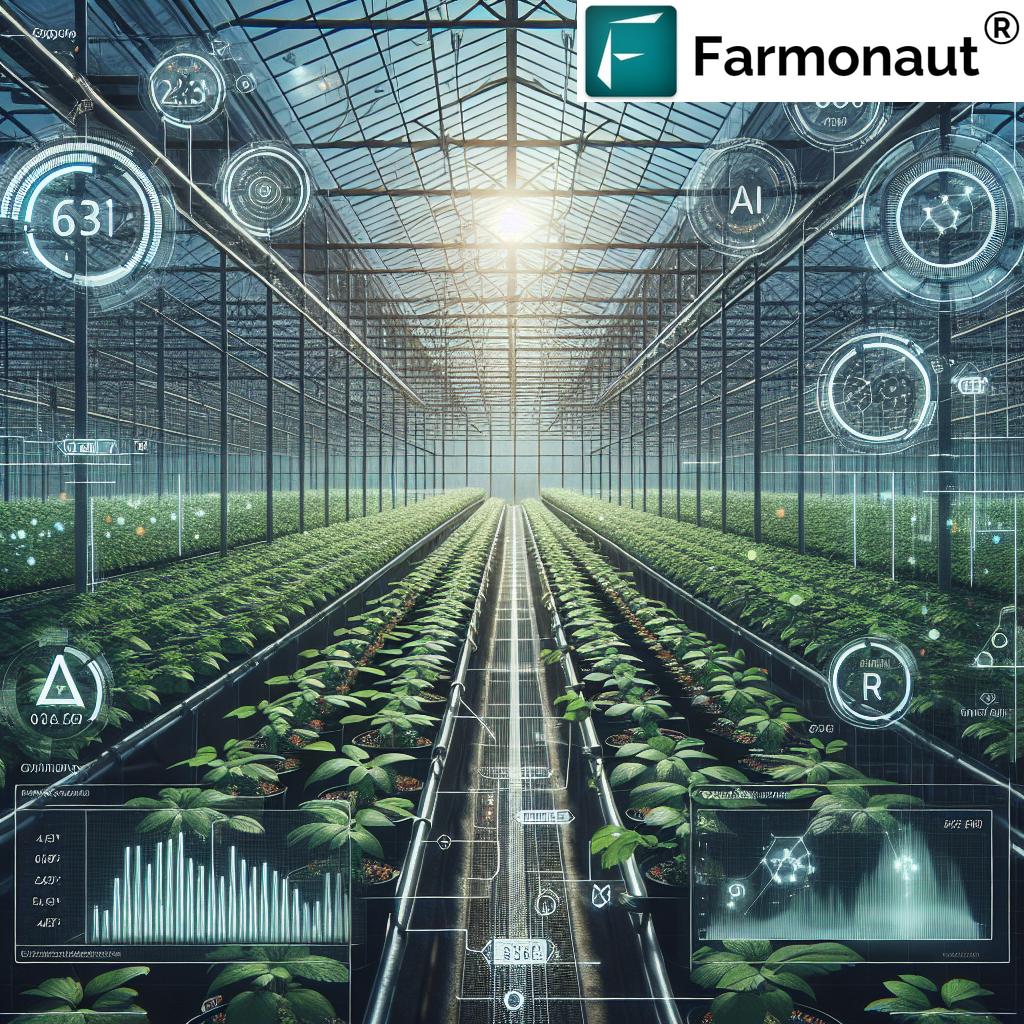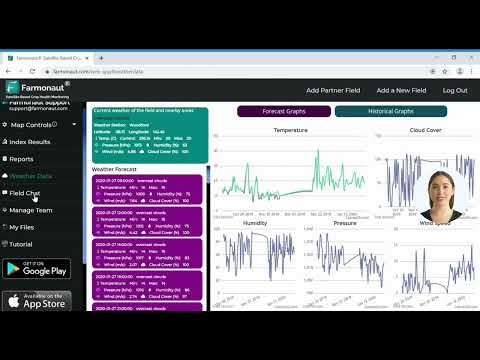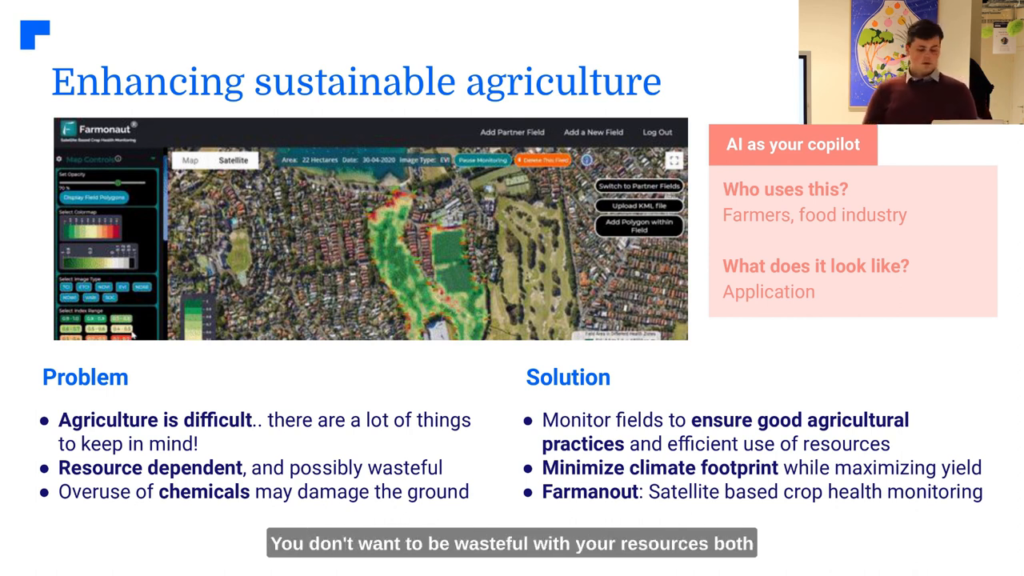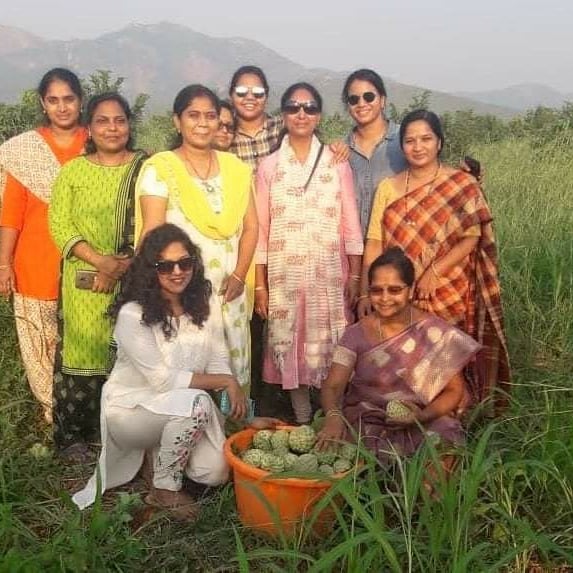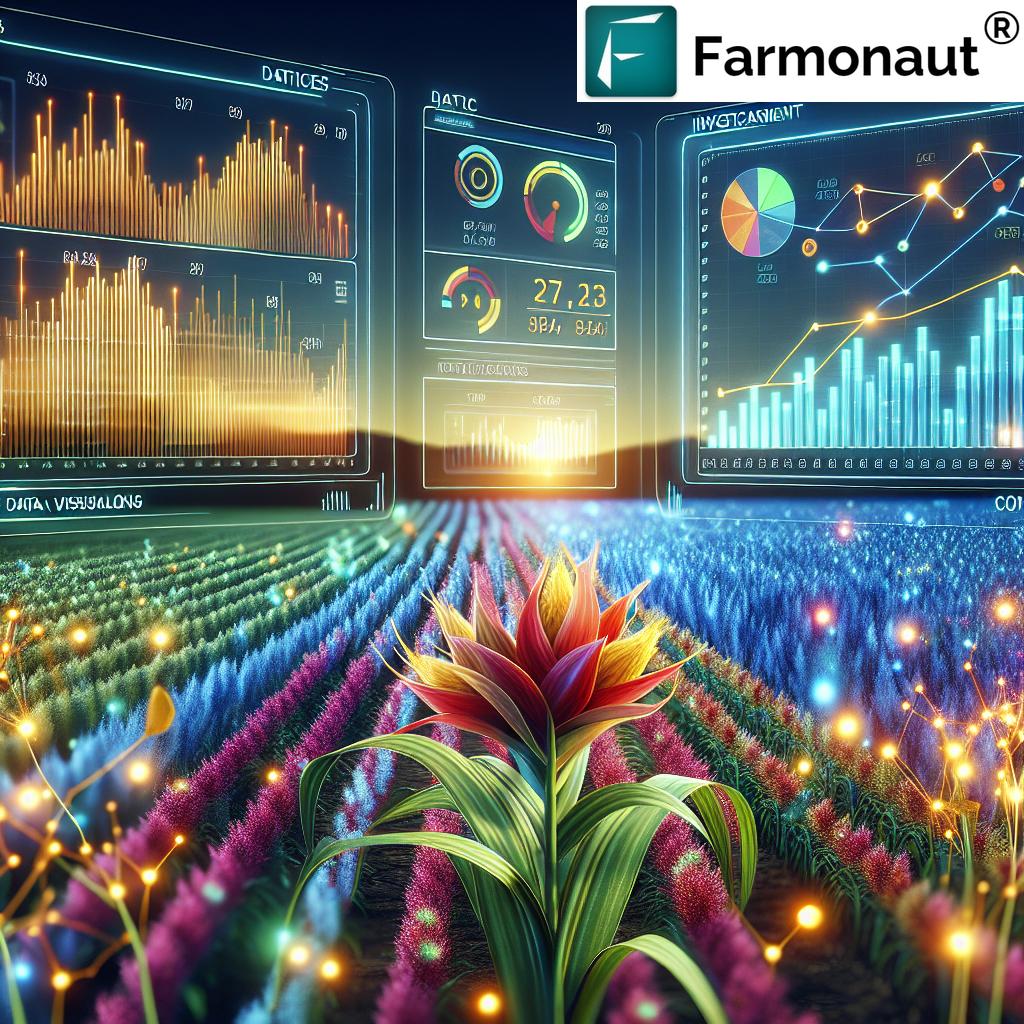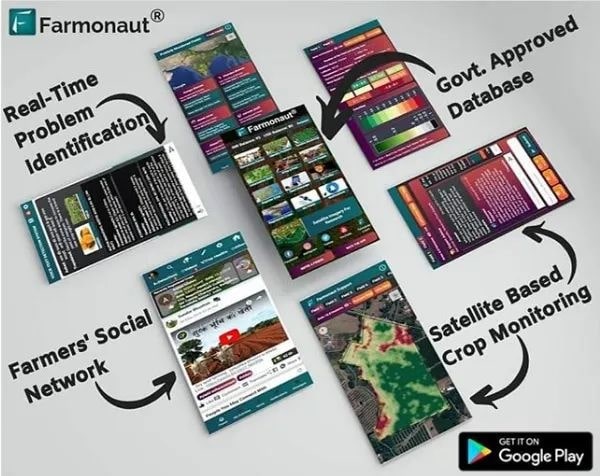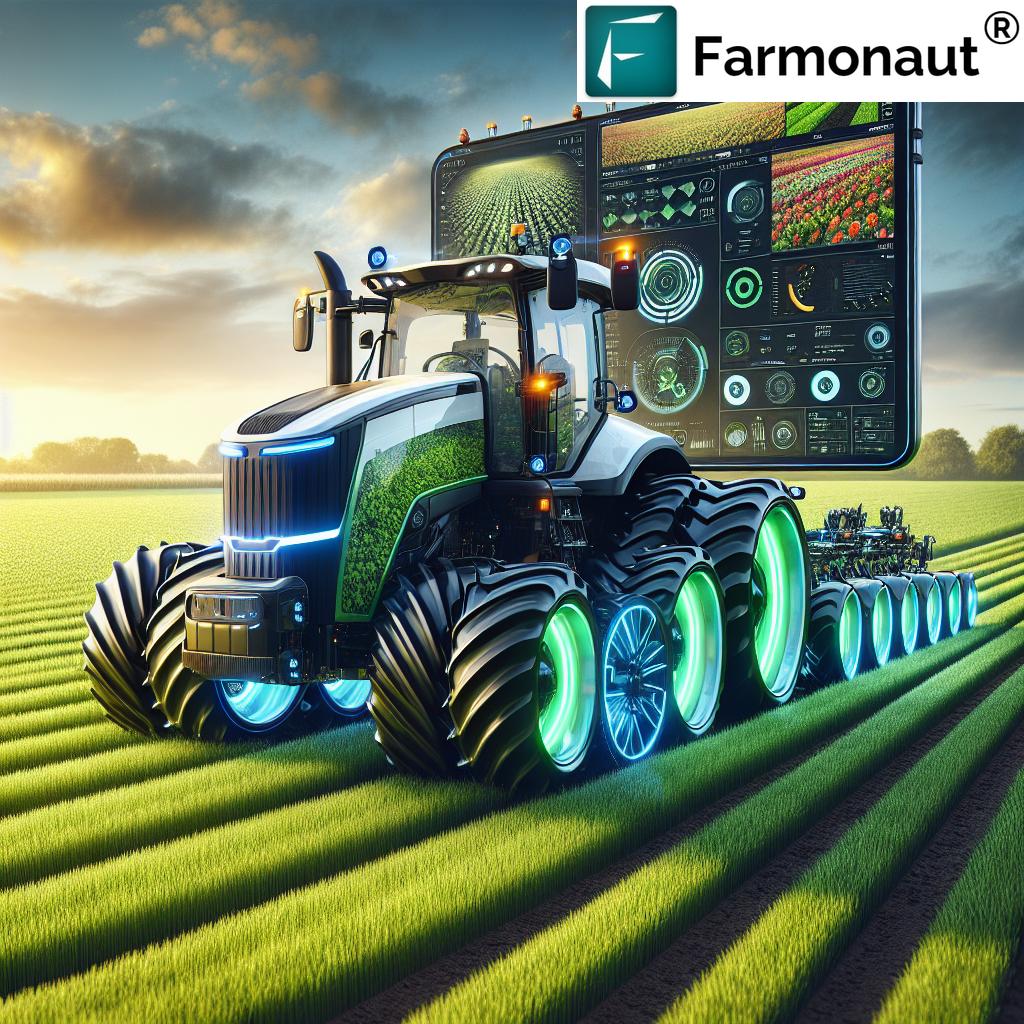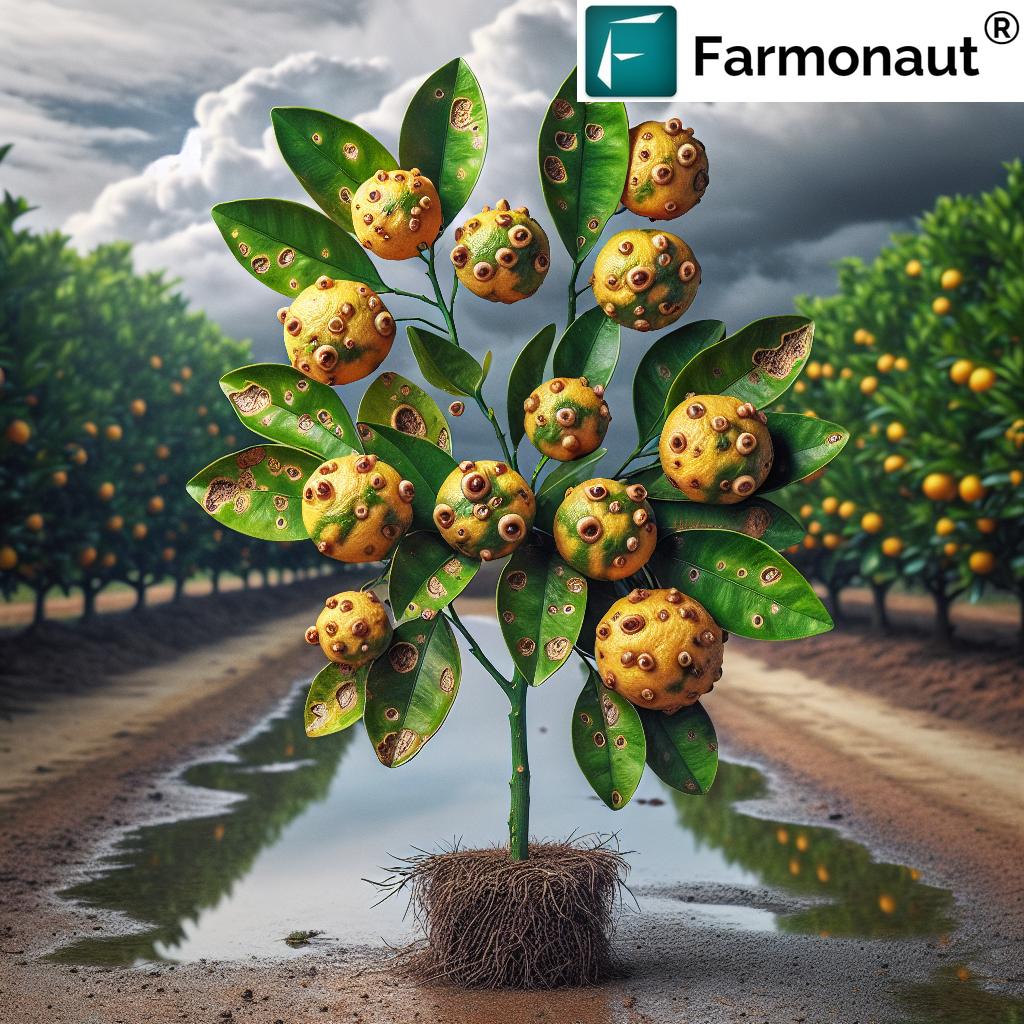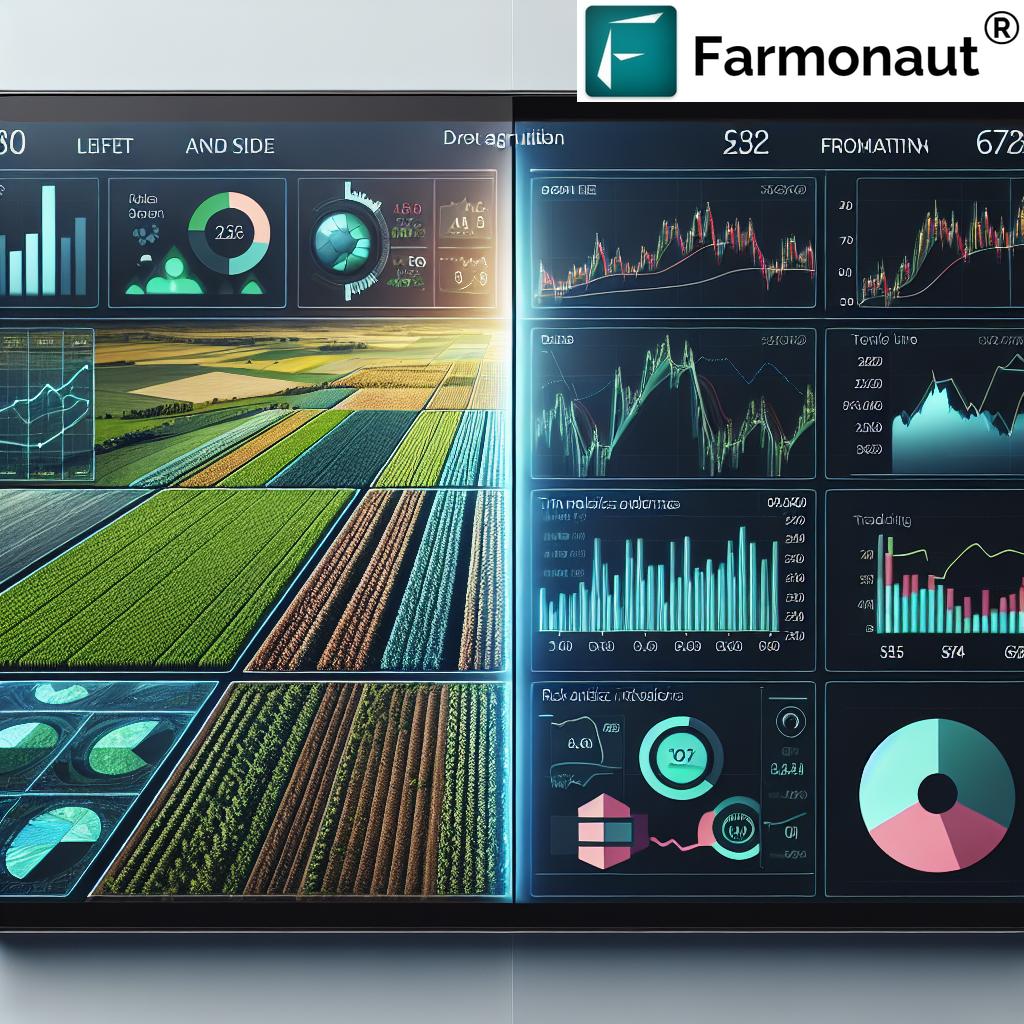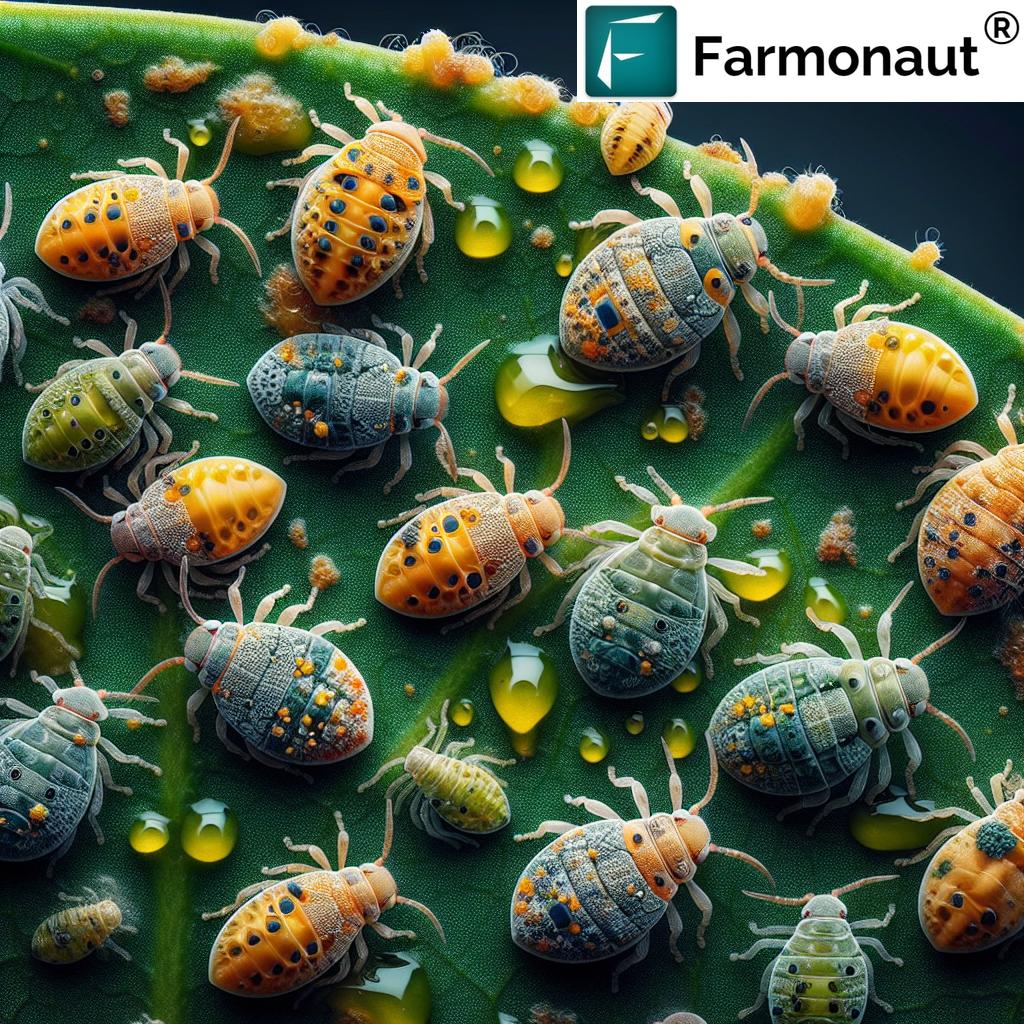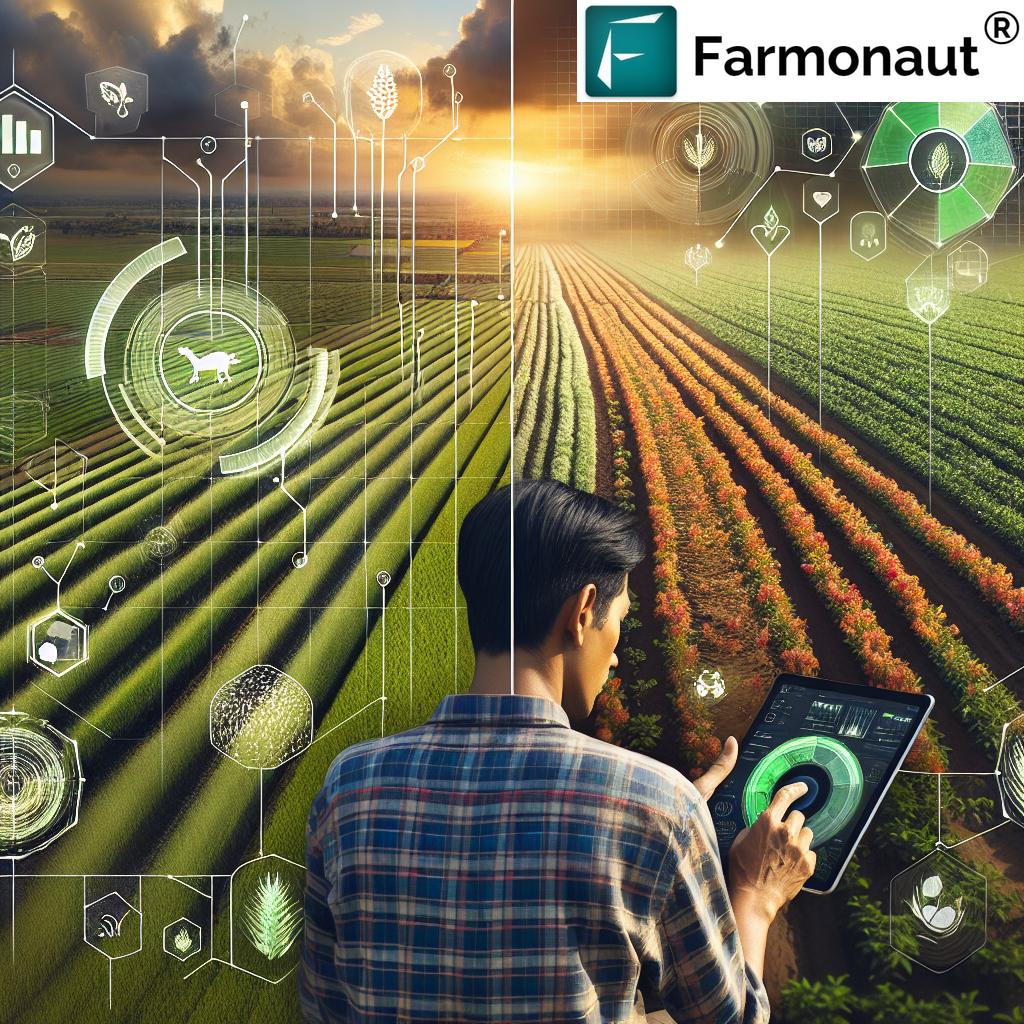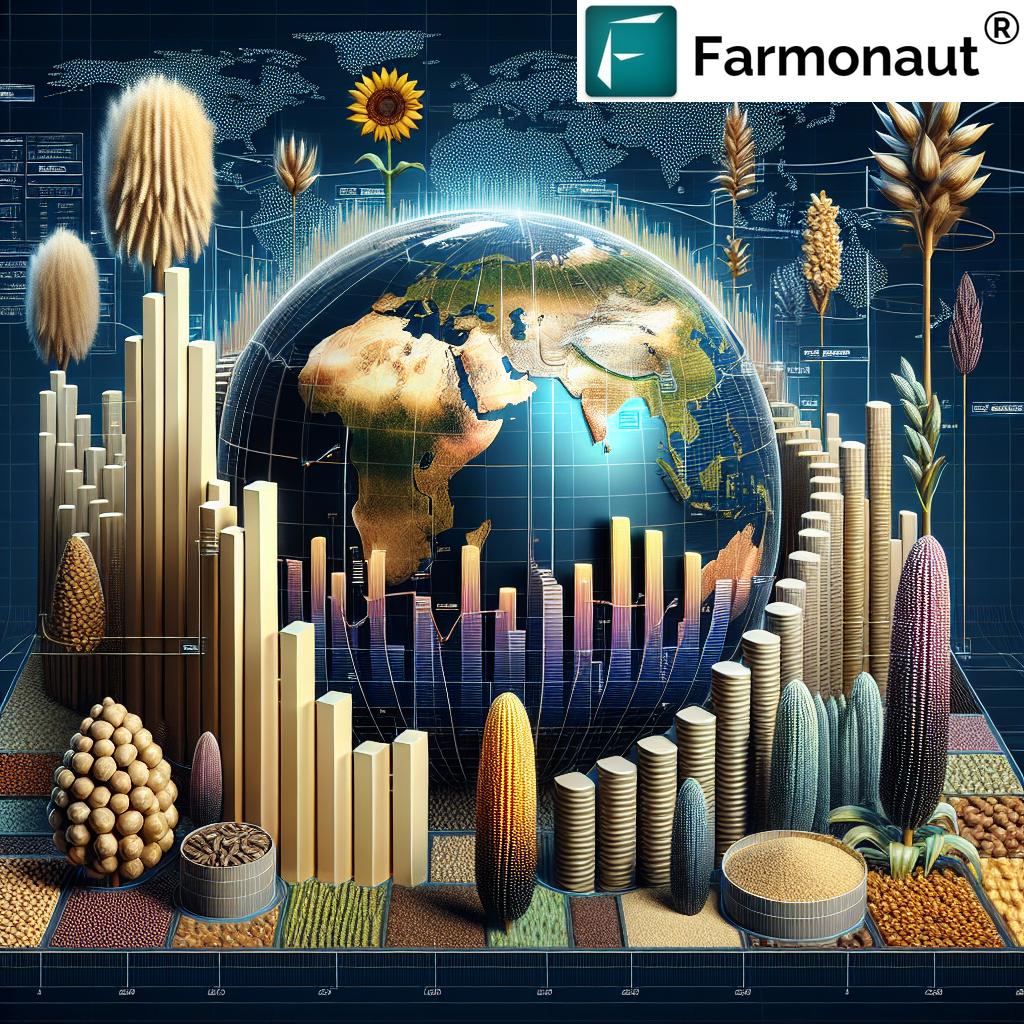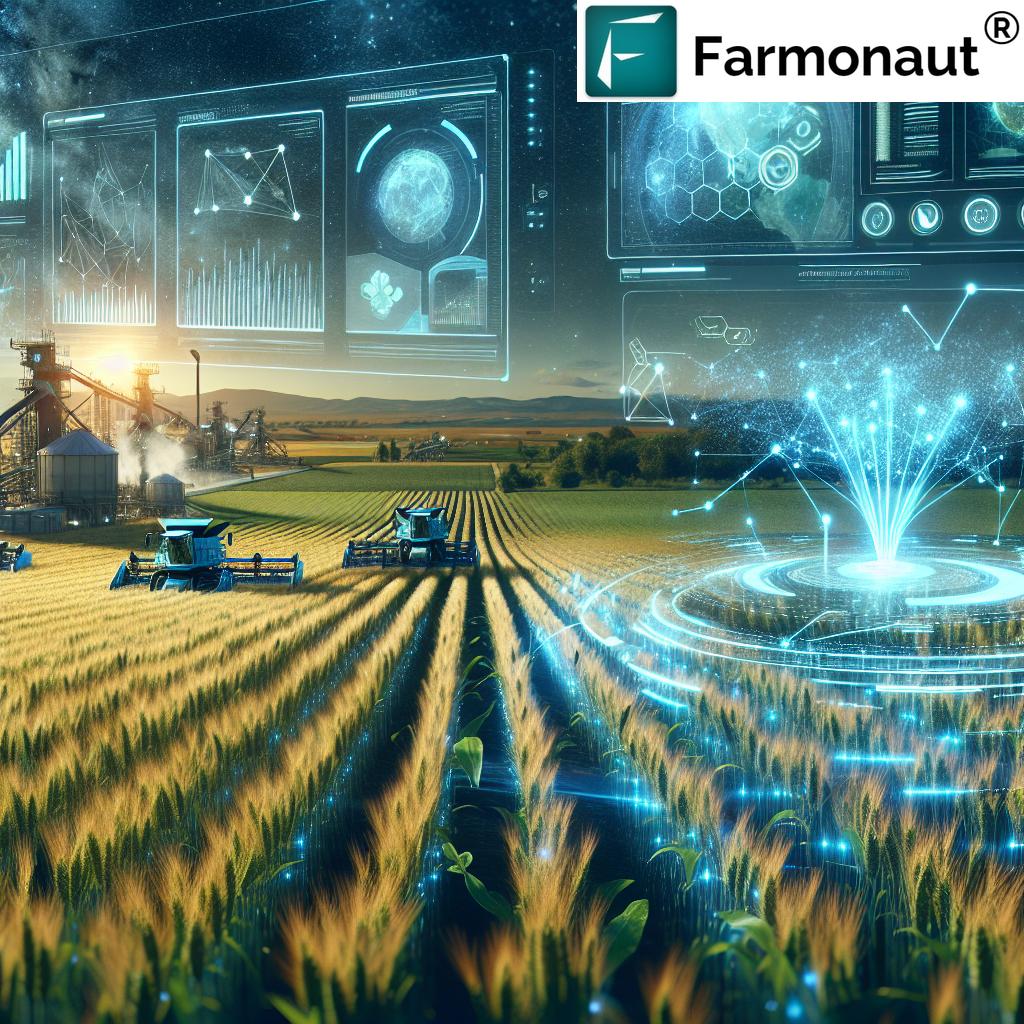Smart Farming Solutions: 10 Mind-Blowing Tech Advances Revolutionizing Agriculture
Table of Contents
- Introduction to Smart Farming Solutions & Precision Agriculture Technology
- Trivia: Surprising Stats on Smart Agriculture
- Overview: The Rise of Smart Farming
- Key Components of Smart Farming Technology
- 10 Mind-Blowing Smart Farming Tech Advances
- Comparison Table: Smart Farming Solutions at a Glance
- Farmonaut: Precision Agriculture Made Accessible
- Applications & Innovations in Forestry
- Trivia: The Power of IoT Smart Sensors
- Challenges of Precision Agriculture & What Lies Ahead
- Frequently Asked Questions (FAQ): Smart Farming
- Get Started With Smart Farming Solutions
Trivia: Surprising Stats on Smart Agriculture
“Over 70% of global farmers are expected to adopt AI-powered precision agriculture tools by 2030.”
Introduction to Smart Farming Solutions & Precision Agriculture Technology
As the world’s population rises and the demand for food production intensifies, embracing Smart Farming Solutions backed by precision agriculture technology has become crucial for the future of global agriculture. By merging emerging technologies—such as the Internet of Things (IoT), artificial intelligence (AI), drones, blockchain, and advanced data analytics—with traditional farming, we have the power to optimize our fields, boost yields, and promote sustainable agricultural practices.
In this article, we will explore the ten most transformative smart farming tech advances that are reshaping the way we manage crops, utilize resources, and make data-driven decisions. We’ll look at how these systems streamline monitoring, resource allocation, and sustainability efforts across agriculture and forestry. As we go, you’ll discover how innovators like Farmonaut are making cost-effective, accessible smart farming solutions a reality for farmers worldwide.
Overview: The Rise of Smart Farming
Smart farming—synonymous with precision agriculture—is an integrated approach in which advanced technology and intelligent systems empower us, as farmers and agribusiness professionals, to make more informed, efficient, and sustainable decisions. Through continuous monitoring of crop health, soil conditions, weather patterns, and much more, these solutions allow us to optimize productivity, minimize waste, and improve overall sustainability.
- Focus on Real-Time Data Acquisition: Data-driven tools help us monitor all aspects of our fields, livestock, and resources.
- Resource Optimization: Automated and predictive systems ensure that water, fertilizer, and energy are used precisely where and when needed.
- Sustainable Practices: Smart farming reduces environmental impact by minimizing chemical and water usage, and by increasing yields with fewer resources.
Let’s explore the key components that form the backbone of modern smart farming solutions and precision agriculture technology.
Key Components of Smart Farming Technology
- IoT-Enabled Sensing: Integrated networks of smart sensors collect real-time data on soil moisture, nutrient levels, microclimates, and crop growth.
- Precision Use of Drones and UAVs: Drone technology in farming is transforming aerial crop monitoring, imaging, and analysis.
- Automated and Autonomous Operations: Robotic tractors and harvesters execute planting, irrigation, and harvesting with minimal human intervention.
- Advanced AI Analytics: From predictive analytics for farming to intelligent disease detection, machine learning enhances decision-making on the farm.
- Blockchain for Transparency: Blockchain in agricultural supply chain is increasing traceability, transparency, and trust from planting to the consumer.
- Climate-smart Agricultural Practices: Data-driven strategies help us adapt to shifting weather and environmental conditions, increasing resilience in the face of climate change.
We are now witnessing how these foundational technologies converge to unlock powerful benefits for agricultural efficiency and sustainability. Let’s take a deep dive into the 10 mind-blowing advances in smart farming solutions that are already transforming our fields and forests.
10 Mind-Blowing Smart Farming Tech Advances
-
1. IoT-Enabled Sensors and Real-Time Data Acquisition in Agriculture
The Internet of Things (IoT) in agriculture is redefining how we monitor fields and make everyday decisions. Using an extensive network of sensors, we gather real-time data on critical factors, such as:
- Soil moisture and nutrient levels for optimal fertilization and irrigation
- Ambient temperature, humidity, and other microclimate parameters
- Chemical residue and pest population for disease detection and pest control
This data collection helps us make targeted interventions, reducing both water and fertilizer wastage. With accurate insights, farming becomes a science—each decision is supported by data, not guesswork.
Example: By combining sensor systems with satelite monitoring platforms like Farmonaut, we can get field-wide insights on moisture, temperature, nutrient status, and crop health— all in real time.
-
2. Drone Technology in Farming: Aerial Surveys & Imaging
Drones and Unmanned Aerial Vehicles (UAVs) now routinely conduct precision aerial surveys of our farmlands. Equipped with high-resolution and multispectral imaging cameras, they:
- Capture images for growth analysis, disease detection, and pest infestations identification
- Scan large fields in minutes, cutting labor and time dramatically
- Support variable-rate application of water, fertilizers, or crop protection chemicals
By monitoring crop health from above, we spot problems early, enabling targeted intervention that minimizes chemical usage while maximizing yield.
-
3. Automated Precision Irrigation Systems
The latest precision irrigation systems use IoT in agriculture to automate and optimize water delivery across fields. By analyzing real-time soil moisture data and weather forecasts, these smart systems:
- Deploy exact amounts of water to the right locations
- Reduce overwatering or underwatering, digitalizing traditional irrigation practices
- Minimize environmental wastage while optimizing crop productivity
This allows us to produce healthier, more resilient crops using less water—vital for both productivity and global sustainability.
Smart irrigation benefits:- Reduces costs and resource wastage
- Improves yields by maintaining perfect soil moisture levels
- Lower risk of disease caused by over- or under-irrigation
-
4. Predictive Analytics for Farming: AI & Machine Learning
Predictive analytics for farming leverages advanced AI and machine learning models to dissect massive data sets from satellites, IoT sensors, and on-ground monitoring. These analytics enable us to:
- Forecast crop yields and possible disease outbreaks
- Advise on best timing for planting, irrigation, pest, and fertilization management
- Identify risks such as weather extremes and soil degradation
By embracing these analytics, our decisions become increasingly proactive, maximizing efficiency and yields while minimizing loss and waste.
-
5. Autonomous Farming Machinery for Precision Operations
From driverless tractors to autonomous harvesters, the use of robotics integrated with IoT sensors and GPS technology is ushering in a new era for agricultural operations. These machines:
- Execute planting, harvesting, soil tillage, and spraying with unmatched accuracy
- Lower labor costs and increase overall farm productivity
- Ensure optimal resource allocation and uniform field conditions
With autonomous farming machinery, we are achieving high-efficiency, large-scale smart farming that was previously unattainable.
Discover Farmonaut’s fleet management solutions—for efficient monitoring and optimization of agricultural machinery, reducing costs and improving safety. -
6. Soil Health Optimization
Accurate soil health optimization is essential for all thriving farm systems. Sophisticated IoT-based soil monitoring systems now measure vital parameters such as:
- pH levels, nutrient content, and organic matter in real time
- Moisture and temperature trends for adaptive irrigation
- Presence of contaminants or diseases affecting soil
Informed by this data, we can apply tailored amendments to create optimal conditions for crop growth while reducing environmental impact.
Learn about Farmonaut’s carbon footprint tracking—monitor and reduce the environmental impact of your farm operations for greater sustainability. -
7. Blockchain in Agricultural Supply Chain: Enhancing Transparency & Trust
Blockchain technology is a game-changer in restoring transparency and trust in the complex agricultural supply chain. Every stage—from planting and processing to distribution—can be captured and logged in an immutable digital ledger. This ensures:
- Complete traceability of crops and products
- Consumers get accurate information on food origin and quality
- Reduced fraud and increased accountability
Farmonaut delivers blockchain-based traceability for agriculture—bringing peace of mind to businesses and consumers by strengthening the integrity of the food chain.
-
8. Climate-Smart Agricultural Practices for Resilience
Climate variability is one of the biggest long-term risks for modern agriculture. Smart farming solutions now provide:
- Granular weather forecasts and historical trends for adaptive farming
- Automated recommendations to mitigate weather-related risks (e.g., delayed planting, early harvesting, irrigation timing)
- Data-driven planning for crop rotation, soil conservation, and pest prevention
Farmonaut’s Jeevn AI-based advisory system provides real-time, personalized weather alerts and decision support for robust, climate-smart farming.
-
9. Livestock Monitoring and Geo-Fencing Systems
Modern livestock practices leverage IoT wearable sensors and geo-fencing to track:
- Animal location, movement patterns, and vital health parameters
- Feeding, reproduction, and social behaviors for optimized management
- Automated alerts when livestock stray beyond safe boundaries
These systems improve detection of illness, reduce labor costs, and ensure livestock safety—contributing to a more efficient, resilient farm ecosystem.
-
10. Smart Greenhouses: Climate-Controlled, Automated Growth
Smart greenhouses lead the way in year-round crop production through full automation and climate control systems. Sensors and actuators continuously monitor and adjust:
- Temperature, humidity, and light intensity for optimal plant growth
- Air and soil moisture parameters for precise irrigation and fertilization
- CO2 levels, ventilation, and pest management
This results in consistently higher yields, reduced resource consumption, and robust resilience to climate variations—showing what’s possible when technology and biology work together toward sustainable agriculture.
Explore Farmonaut’s solutions for large-scale farm and greenhouse management —unlock insights for multi-location, multi-crop planning and real-time environmental control.
Comparison Table: Smart Farming Solutions at a Glance
| Smart Farming Solution | Technology Used | Key Benefits | Yield Improvement (%) | Resource Savings (%) | Sustainability Impact |
|---|---|---|---|---|---|
| IoT-Enabled Sensors & Data Acquisition | IoT, Wireless Sensors, Data Analytics | Optimized input allocation, real-time monitoring, better decisions | 15–20% | 30–50% | Minimized overuse, reduced runoff, healthier soils |
| Drone & UAV Aerial Surveys | Drones, UAVs, Multispectral Imaging | Early disease/pest detection, rapid area assessment, reduced labor | 10–17% | 15–25% | Lower chemical usage, improved environmental monitoring |
| Automated Precision Irrigation | IoT, Automated Valves, Sensors, Forecasting | Exact water delivery, increased yield, minimized waste | 20–30% | 35–50% | Reduced water usage, improved drought resilience |
| Predictive Analytics & AI | AI, Machine Learning, Big Data | Yield forecasting, disease/pest prediction, resource optimization | 10–18% | 18–28% | Reduced crop loss & waste, resilient planning |
| Autonomous Farming Machinery | Robotics, Sensors, GPS | Reduced labor, precision planting & harvesting, consistent quality | 17–25% | 20–37% | Lower greenhouse gas emissions, energy savings |
| Soil Health Optimization | IoT, Soil Sensors, Analytics | Targeted soil amendments, efficient fertilizer usage | 16–24% | 24–33% | Healthier soils, lower chemical leaching |
| Blockchain Supply Chain Transparency | Blockchain, Data Integration | Fraud prevention, traceability, enhanced trust | Up to 5% | Up to 15% | Reduces food fraud & enhances sustainability claims |
| Climate-Smart Practices | IoT, AI, Weather Analytics | Risk mitigation, adaptive decision-making, stabilized yields | 8–15% | Up to 18% | Improved climate resilience in crops & farming systems |
| Livestock Monitoring & Geo-Fencing | IoT Wearables, GPS, Geo-Fencing | Improved animal health, lowered labor, reduced loss | 7–12% | 10–22% | Better welfare, lower ecological footprint |
| Smart Greenhouses | Sensors, Automation, IoT, AI | Year-round yields, reduced energy & water use | 30–45% | 37–52% | Efficient closed-loop, low-carbon agriculture |
Farmonaut: Precision Agriculture Made Accessible to All
Among the leaders in smart farming solutions, Farmonaut stands out for its mission of democratizing precision agriculture technology. Farmonaut’s satellite-based crop monitoring platform is accessible via Android, iOS, web browser, and robust API integrations—making it easier than ever for farmers and agribusinesses to tap into the power of data-driven farming.
- Satellite Crop Monitoring Systems: Real-time multispectral satellite data on crop health, NDVI, soil moisture levels, and even pest or disease alerts.
- AI Advisories: Jeevn AI delivers customized advisory services—from weather forecasts to resource recommendations—maximizing crop productivity and efficiency.
- Blockchain Traceability: Supply chain tracking and fraud reduction for greater transparency and trust.
- Fleet and Resource Management: Fleet management tools help optimize agricultural logistics and reduce operational costs.
- Environmental Sustainability: Carbon footprint tracking seamlessly integrated to help you measure and reduce emissions.
Farmonaut’s subscription plans are tailored for everyone from individual farmers to large agribusinesses and government agencies. The platform’s API also enables seamless integration with existing agricultural management systems and applications. Explore the detailed API developer docs at Farmonaut API Docs.
Applications and Innovations in Smart Forestry Technology
Innovative smart farming solutions are not limited to typical crop agriculture—they are having a profound impact in forestry as well. With the growing need for sustainable forest management, these technologies enable:
- Forest Health Monitoring: Drones and remote sensing technologies rapidly assess forest health, detect diseases or pest outbreaks, and monitor biodiversity without disturbing the ecosystem.
- Precision Forestry Management: Using GPS and GIS technologies, we can map and manage forest resources with pinpoint accuracy, optimizing timber harvesting and ensuring ecological sustainability.
- Wildfire Risk Detection and Management: IoT sensors combined with AI-based models predict, detect, and monitor wildfire risk—enabling real-time alerts and rapid response to minimize damage.
- Fleet and Resource Coordination: For large forest tracts, fleet management solutions keep all operations running efficiently, from harvesting to wildfire response.
- Plantation & Forest Advisory: Get tailored recommendations with Farmonaut’s crop plantation forest advisory tools—from growth monitoring to resource optimization.
Trivia: The Power of IoT Smart Sensors
“Smart sensors can reduce water usage in farming by up to 50% through real-time soil monitoring and data analysis.”
Challenges of Precision Agriculture & What Lies Ahead
Although precision agriculture technology and smart farming solutions offer unprecedented benefits, several challenges must be confronted to ensure widespread adoption:
- High Initial Investment: For small- and mid-sized farmers, the upfront costs of implementing new technologies, sensors, and systems can be prohibitive. The democratization of platforms like Farmonaut is helping lower these barriers by eliminating the need for expensive on-field hardware.
- Data Privacy and Security Concerns: Increasing collection and use of farm, weather, and personal data highlight the importance of strong privacy protocols to maintain trust.
- Technical Expertise and Training: Effective utilization of advanced systems requires knowledge and comfort with digital tools, analytics, and innovative practices. Ongoing education is essential for success.
The future of smart farming will see:
- Lower costs and greater access to smart technology, especially in developing agricultural economies
- Broader application of AI, IoT, and blockchain, making the entire food and forest system more efficient, sustainable, and resilient
- Increased focus on regenerative and climate-smart agricultural models, securing long-term food and environmental stability
By addressing these challenges, we pave the way for a new era in which data, technology, and sustainable farming practices work hand-in-hand to feed—and heal—the planet.
Frequently Asked Questions (FAQ): Smart Farming Solutions
What is smart farming?
Smart farming—or precision agriculture—is the use of advanced digital technologies, data analytics, and automation to monitor, manage, and optimize farm operations, maximizing resource efficiency and yields.
How can IoT help in agriculture?
The Internet of Things (IoT) enables real-time data collection on weather, soil, crops, and livestock via interconnected sensors and devices. This helps farmers make precise, informed decisions to increase productivity and reduce resource waste.
What is the role of drones in agriculture?
Drones capture aerial imagery of crop fields, monitor plant health, detect pest infestations, and even perform targeted spraying. This data accelerates early detection, supports precision agriculture, and reduces labor needs.
How does blockchain improve the supply chain?
Blockchain technology brings traceability and transparency to the agricultural supply chain. Every stage of production is recorded in an immutable ledger, ensuring consumer confidence and trust by validating food origin and quality.
Can smart farming solutions help with sustainability?
Absolutely—smart farming optimizes resource allocation, lowers input waste, mitigates environmental impact, and promotes climate resilience. Data-driven systems mean healthier soils, cleaner water, and increased yield using fewer resources.
How do I get started with Farmonaut?
You can start by signing up for Farmonaut’s app (web, Android, iOS) or integrating its API for farm and environmental monitoring. Explore precision agriculture tools, advisory, carbon tracking, and supply chain features tailored for all scales.
Get Started with Next Generation Smart Farming Solutions
Ready to transform your farm, plantation, or forestry operation with the latest precision agriculture technology?
Download the Farmonaut app for instant access to satellite crop health monitoring, AI-based advisories, blockchain traceability, and API connectivity.
For fleet, loan/insurance, traceability, plantation, and enterprise farm management solutions, be sure to check:
- Large scale farm & greenhouse management
- Crop loan approval & insurance verification—reduce fraud, speed up claim processing
- End-to-end product traceability for food, textile, and allied industries
Together, by leveraging smart farming solutions, we can cultivate a future where increased yields, sustainability, and resource efficiency are within everyone’s reach.
Start your journey with Farmonaut today and join the agricultural revolution!



